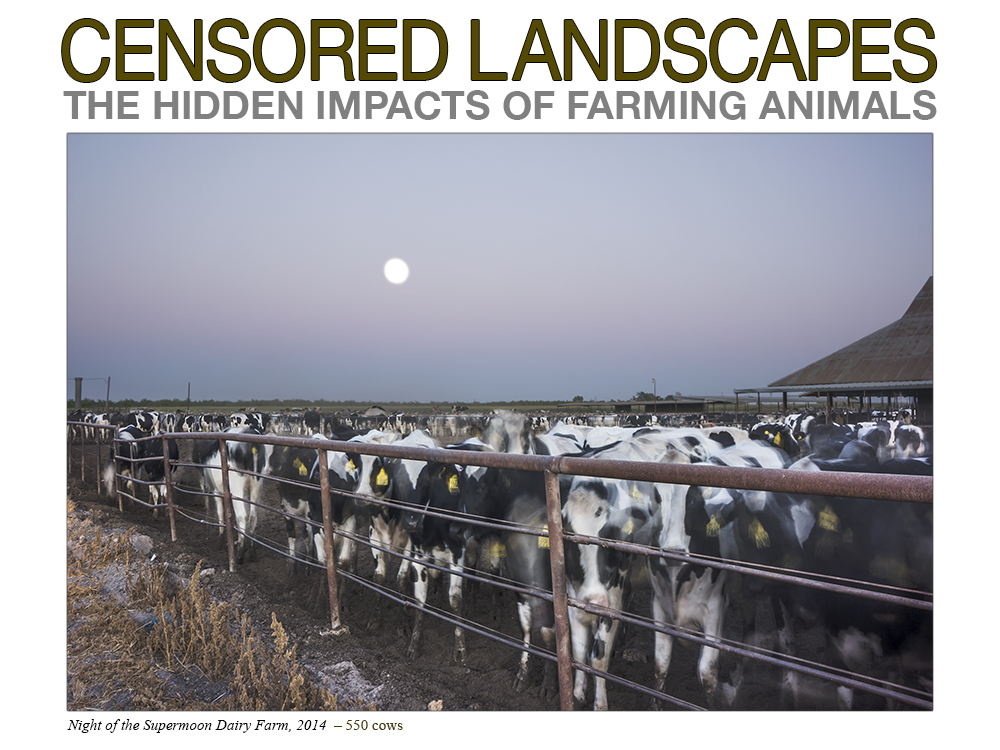
Censored Landscapes
Censored Landscapes tells a story in which the main characters are innocent of any crime and yet are sentenced to imprisonment, torture, and death. It’s a true story of ecological destruction, of worker exploitation – mostly people of color, and of secretive corporations protected by laws and enriched by government subsidies and lobbies. It is also a story that offers insight and healing.
Censored Landscapes consists of photographic color landscapes that include sites of animal agriculture. A number displayed with each landscape represents the number of animals confined within the facility. Essays, poems, and research reveal the destructive truth behind the banal exteriors. Monochrome portraits of nonhuman animals who have been confined in these kinds of facilities are emblematic of animals whose individuality is obscured because of their vast numbers, and because they are hidden away in remote areas. The portraits draw attention to the individuality, sentience, and beauty of the animals.
The photographs by Isabella La Rocca González and accompanying text by La Rocca González and other scholars, poets, and activists form a prism that illuminates the connections between animal agriculture and many facets of society impacted by the industry including animals, the environment, workers, human health, economic political structures, and social justice. The project critically engages with a range of societal forces that undergird and facilitate animal agriculture. Fundamental to Censored Landscapes is a holistic and explicit recognition of the commonality of oppressions, so that speciesism, sexism, racism, classism, ableism and other hierarchical beliefs are viewed as part of a larger interwoven system of domination. Though the project maintains a lyrical quality through imagery, poetry, and personal narrative, the stark presentation of facts and scientific research provide the potential as a reference for further exploration. Animals represented in this series include chickens, turkeys, ducks, cattle, pigs, goats, sheep, rabbits, pigeons, and fish. Facilities include farms, feedlots, livestock auctions, and slaughterhouses.
In light of the enormous suffering of farmed animals, of our current environmental crisis, of growing socioeconomic inequities, and of the increasing availability of alternative plant-based products, Censored Landscapes is especially timely.
